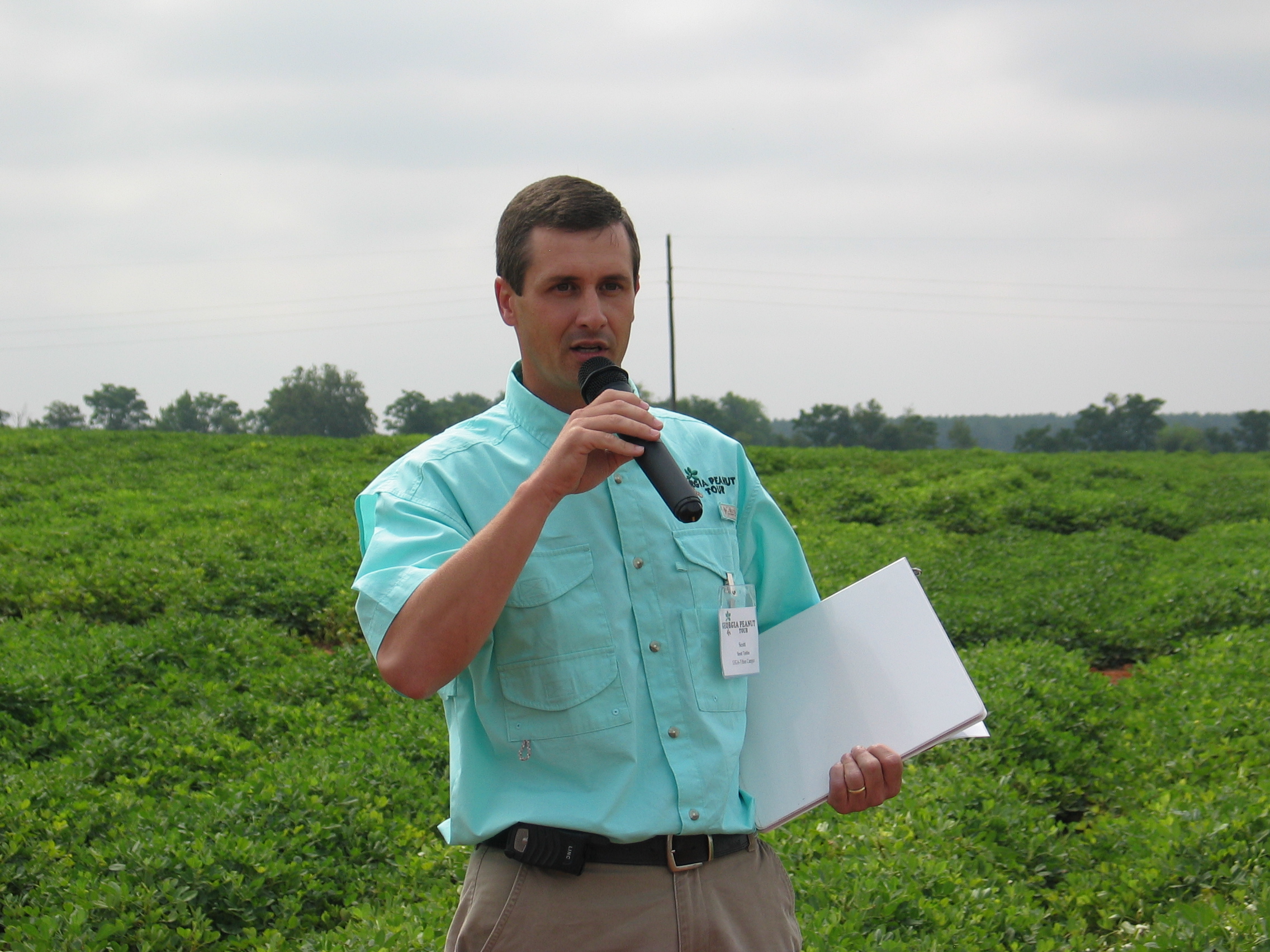 Scott Tubbs, University of Georgia cropping systems agronomist, discussed the first year of a research study looking at increasing or decreasing seed per foot when planting and the effect this how on the risk of disease. There were 42 treatments per repetition using various seeding rates on single and twin rows. Tubbs planted the following varieties in the test: Florida 07, Tifguard, AP3, Georgia-03L, AT3085RO, Georgia-06G and Georgia Green. The varieties were planted at the recommended rate of 6 seed per foot on single or 3 seed per foot on twin rows. The 6 seed per foot equals 4 plants per stand. Then in the research trial the varieties were also planted by increasing the seed per foot by one seed to 7 and decreasing the seed per foot by one seed to 5. Results have shown that when the seed per foot has been reduced then there has been an increase in tomato spotted wilt virus. Also, when the seed per foot has been increased then there has been an increase in white mold. There are also similar studies like this at the University of Georgia research stations in Attapulgus and Midville. The tests in Attapulgus is looking at even higher rates of seed per foot while the Midville test is looking at lower rates of seed per foot. In one variety, Georgia Green, growers use 87,522 seed per acre when planting 6 seed per foot, 73,000 per acre when planting 5 seed per foot and 102,000 seed per acre when planting 7 seed per foot. If a farmer is able to decrease the seeding rate at planting then they could potentially save $16.00 to $20.00. The research should be able to shed some new light on the seeding rate when planting and how farmers could potentially save money. However, at the present time farmers are using the Peanut RX program, which is a disease risk index and the recommendation is to plant 6 seed per foot at planting for single rows which would equal a final plant stand of four plants.
Scott Tubbs, University of Georgia cropping systems agronomist, discussed the first year of a research study looking at increasing or decreasing seed per foot when planting and the effect this how on the risk of disease. There were 42 treatments per repetition using various seeding rates on single and twin rows. Tubbs planted the following varieties in the test: Florida 07, Tifguard, AP3, Georgia-03L, AT3085RO, Georgia-06G and Georgia Green. The varieties were planted at the recommended rate of 6 seed per foot on single or 3 seed per foot on twin rows. The 6 seed per foot equals 4 plants per stand. Then in the research trial the varieties were also planted by increasing the seed per foot by one seed to 7 and decreasing the seed per foot by one seed to 5. Results have shown that when the seed per foot has been reduced then there has been an increase in tomato spotted wilt virus. Also, when the seed per foot has been increased then there has been an increase in white mold. There are also similar studies like this at the University of Georgia research stations in Attapulgus and Midville. The tests in Attapulgus is looking at even higher rates of seed per foot while the Midville test is looking at lower rates of seed per foot. In one variety, Georgia Green, growers use 87,522 seed per acre when planting 6 seed per foot, 73,000 per acre when planting 5 seed per foot and 102,000 seed per acre when planting 7 seed per foot. If a farmer is able to decrease the seeding rate at planting then they could potentially save $16.00 to $20.00. The research should be able to shed some new light on the seeding rate when planting and how farmers could potentially save money. However, at the present time farmers are using the Peanut RX program, which is a disease risk index and the recommendation is to plant 6 seed per foot at planting for single rows which would equal a final plant stand of four plants.
